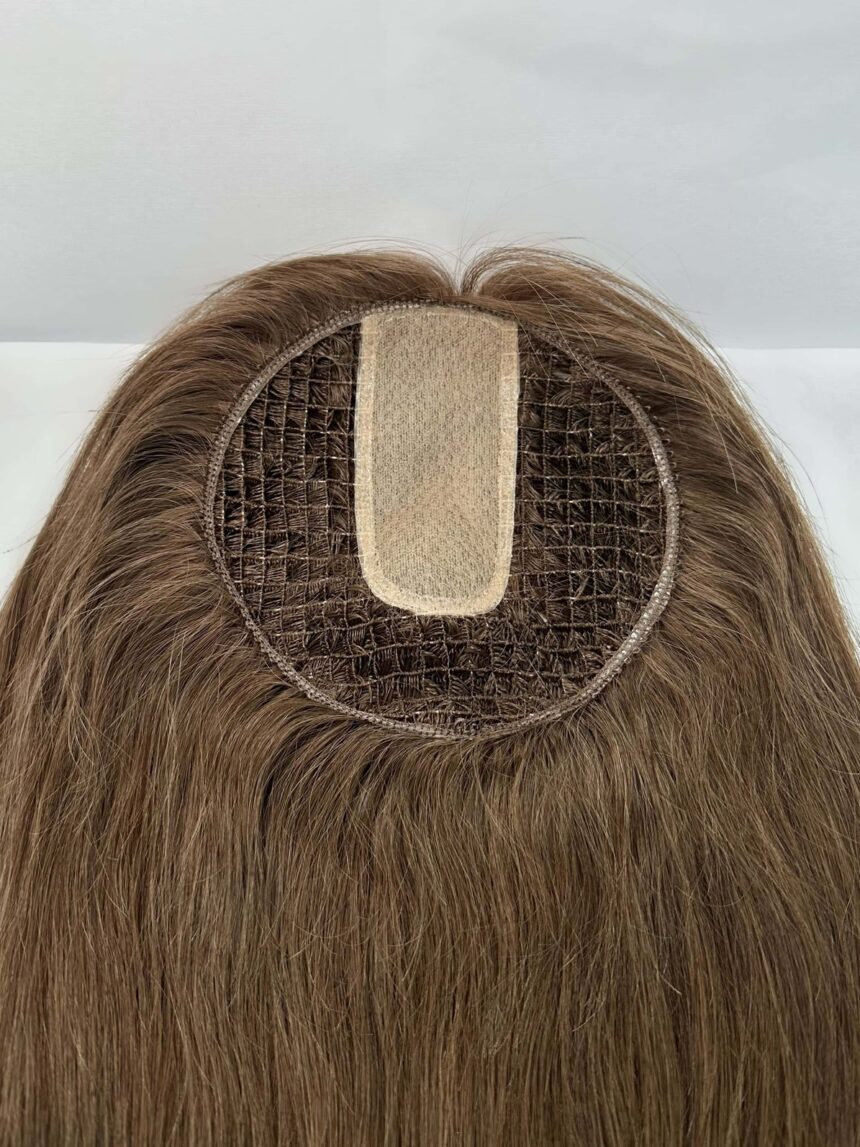In the world of hair enhancement, two popular options stand out: hair toppers and hair extensions. Both provide solutions for individuals looking to enhance their hairstyles, but they serve different purposes and cater to distinct needs. Understanding the differences between hair toppers and extensions is crucial for anyone considering these options. This article will explore the characteristics, benefits, and ideal use cases for each, helping individuals make informed decisions based on their unique circumstances.
Understanding Hair Toppers
Hair toppers are hairpieces that cover specific areas of the scalp, providing the appearance of fuller hair. They are explicitly designed for individuals experiencing hair thinning or hair loss. Toppers come in various styles, lengths, and colours, allowing users to find a product that matches their natural hair as closely as possible.
Benefits of Hair Toppers
- Coverage for Thinning Hair: One of the primary benefits of hair toppers is their ability to cover areas of thinning hair or bald spots. They can significantly boost confidence for individuals dealing with hair loss, making them feel more comfortable in social situations.
- Easy Application: Hair toppers are typically easy to apply. They often feature clips or adhesive strips that secure them to the natural hair, allowing users to put them on and remove them with minimal effort.
- Variety of Styles: Hair toppers come in various styles, lengths, and textures. This diversity enables individuals to choose a topper that matches their hair type and desired look. Whether opting for a sleek bob or luscious waves, options suit every preference.
- Non-Permanent Solution: For those who are hesitant about committing to a long-term hair solution, hair toppers offer a non-permanent way to enhance their look. They can be easily removed at the end of the day, providing flexibility for different occasions.
Understanding Hair Extensions
Hair extensions, on the other hand, are designed to add length, volume, or colour to existing hair. They can be made from synthetic or human hair and come in various application methods, including clip-in, tape-in, sew-in, and micro-ring extensions. Hair extensions are often used by individuals looking to transform their hairstyle without waiting for their natural hair to grow.
Benefits of Hair Extensions
- Length and Volume: The primary purpose of hair extensions is to add length and volume. For individuals with acceptable or short hair, extensions can create the illusion of a fuller head, allowing for various styling options.
- Versatility: Hair extensions allow for versatility in styling. They can be curled, straightened, and styled like natural hair, enabling individuals to experiment with different looks without committing to a permanent change.
- Colour Options: Extensions provide an excellent opportunity to explore new colours. Individuals can add highlights, lowlights, or bold colours without chemical treatments on their natural hair.
- Variety of Application Methods: With several application methods available, individuals can choose the one that best fits their lifestyle. For instance, clip-in extensions are perfect for those who want a temporary change, while sew-in extensions offer a more semi-permanent solution.
Critical Differences Between Hair Toppers and Hair Extensions
While both hair toppers and hair extensions serve to enhance hairstyles, they cater to different needs and offer distinct benefits. Here are the key differences:
Purpose
The primary purpose of hair toppers is to provide coverage for thinning hair or bald spots. They are designed for individuals experiencing hair loss and offer a solution that conceals those areas. In contrast, hair extensions aim to add length and volume, allowing individuals to transform their hairstyles without dealing with thinning hair issues.
Application
Hair toppers are typically applied by securing them to the natural hair using clips or adhesive. They cover specific areas of the scalp and blend with the natural hair. Hair extensions, depending on the method, can be clipped in, taped, sewn, or bonded, and they are integrated throughout the hair to provide a seamless look.
Range of Styles
While both toppers and extensions come in various styles, hair toppers are often designed to mimic natural hair density and texture, focusing on areas where hair is thinning. Hair extensions, on the other hand, can be more varied in style, allowing for dramatic changes in length, volume, and colour.
Target Audience
Hair toppers cater primarily to individuals experiencing hair thinning or loss, regardless of age or gender. They provide a solution for those looking for a temporary fix for their hair concerns. Hair extensions, however, appeal to a broader audience, including individuals who want to enhance their natural hair for fashion purposes, special events, or everyday wear.
Which Option Is Right for You?
Choosing between hair toppers and hair extensions ultimately depends on individual needs and preferences. Here are some considerations to help guide the decision:
For Hair Toppers:
- Hair toppers may be the ideal choice if you are experiencing hair thinning or hair loss. They provide coverage and can significantly boost confidence.
- Those looking for a non-permanent solution that can be easily applied and removed may find hair toppers a suitable option.
- If desiring a product that blends seamlessly with existing hair while providing fullness and coverage, hair toppers can be a perfect fit.
For Hair Extensions:
- Hair extensions are the way to go if the goal is to add length or volume to natural hair. They can create dramatic transformations.
- Hair extensions offer versatility and styling options for individuals who enjoy experimenting with different hairstyles, colours, and lengths.
- If you are looking for a solution that allows for various application methods based on lifestyle, hair extensions provide multiple options.
Making an Informed Decision
When considering hair toppers versus hair extensions, assessing personal needs, lifestyle, and desired outcomes is essential. Both options have unique advantages, and understanding the differences can lead to a more satisfying and confident choice.
Individuals should take the time to research various products, application methods, and styling techniques before making a decision. Consulting with a hairstylist can also provide valuable insights based on personal hair type and specific needs. Whether opting for hair toppers or extensions, both can enhance one’s appearance and allow for greater self-expression and creativity in hairstyling.



